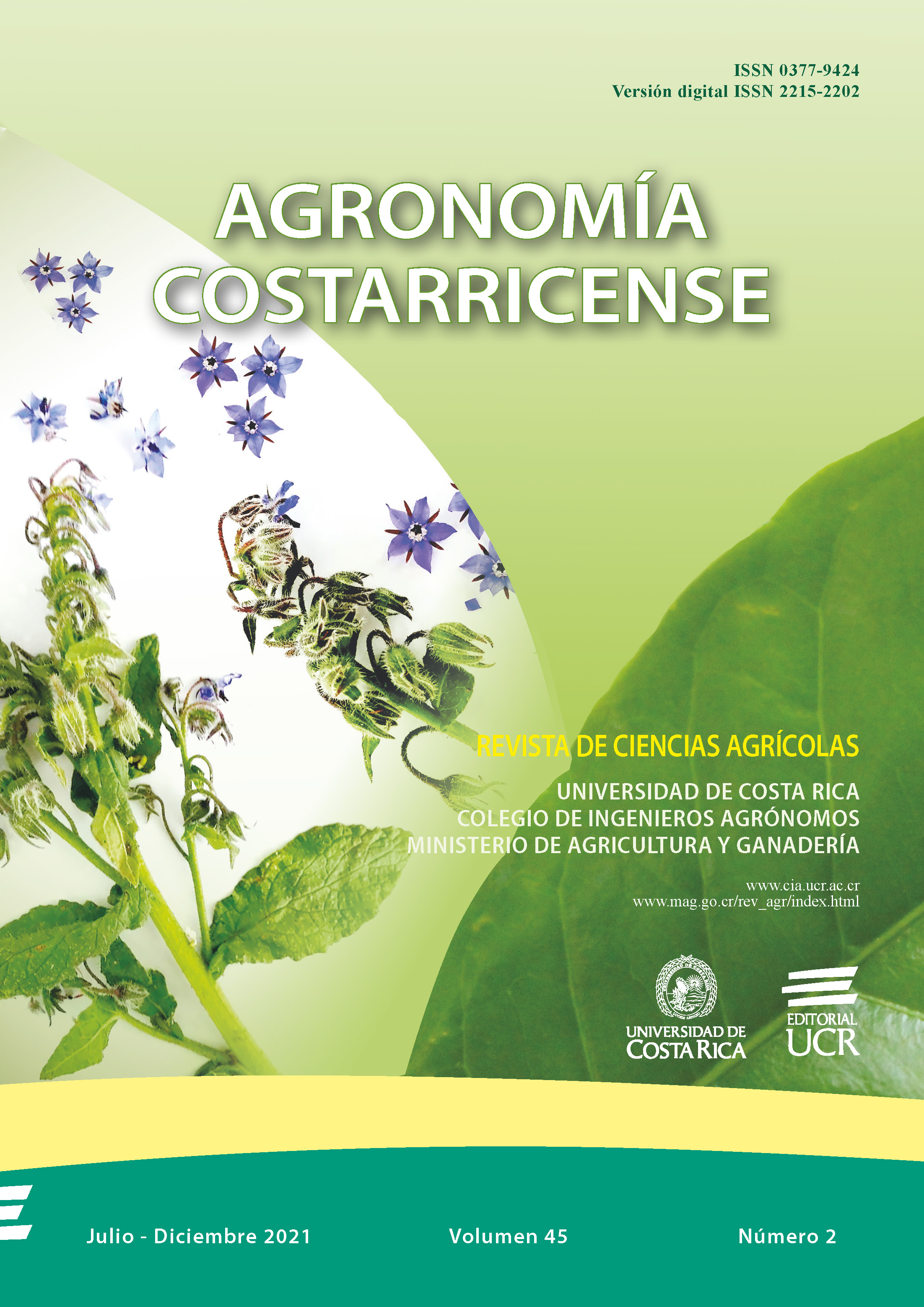Abstract
Introduction. Red seeded common bean is the second most consumed in Costa Rica. Market penalizes the price of dark red grain and requires shiny light red-seeded cultivars. At the same time, producers need pathogen resistant and good yielding varieties. Objective. Describe the process of development and the main agronomic characteristics of cultivar Tayní. Materials and methods. This cultivar was developed from the triple cross Tío Canela 75 // SRC1-1-18 / SRC 1-12-1 made in 1999 in Escuela Agrícola Panamericana (Honduras). It was evaluated from 2002 to 2008, by the Instituto Nacional de Innovación y Transferencia en Tecnología Agropecuaria and the Universidad de Costa Rica. The agronomic performance and the agronomic characteristics of Tayní were determined through four nurseries, 28 trials and 32 validation plots, carried out under farmer management in 12 localities of Costa Rica. The cultivar was released on February 23th, 2012 in Pueblo Nuevo, Upala, Alajuela. Results. Tayní is a shiny red-seeded cultivar, with a yield of 1450 kg.ha-1 under farmer management and 2063 kg.ha-1 under experimental conditions. It has a growth habit type II, intermediate resistance to Pseudocercospora griseola (angular leaf spot) and Thanatheporus cucumeris (wet blight), and resistance to Bean common mosaic virus (dominant I gene) and Bean golden yellow mosaic virus (bgm-I gene and SW12 major QTL). Its grain has a tone of red (grade 5) with better commercial value than Cabécar (grade 6). Under rainy conditions the grain of Tayní discolors less than the grain of Cabécar (1.1 and 2.8 %, respectively). Conclusions. The red tone of its grain and its lower percentage of discoloration, give Tayní a commercial advantage over Cabécar, the most planted red seeded cultivar in Costa Rica.


